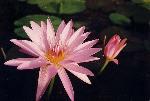How Do You Tell The Difference
Between
 Tropical and Hardy Waterlilies?
Tropical and Hardy Waterlilies?
Click images to enlarge
There are two main types of waterlilies that we can select for our ponds, tropicals and hardies. For details about how they are grouped by the scientists see our Waterlily Family Tree but, for most of our purposes, a description of their characteristics is enough.
The main thing that differentiates them for the grower is COLD! Tropical waterlilies don't like it and hardies tolerate it. Though all will go dormant in cold conditions, the rootstock of many hardies can survive in water just short of freezing solid. Where icing over is a threat, the tubers of tropicals must be removed from the pond and stored in moist cool to warm conditions to come back in future years. In warm climates they can remain in the pond.
This does not mean that hardies won't grow well in the south and tropicals won't grow well in the north. They will! Popular varieties of both are very tolerant of wide variability in temperatures and conditions. It is more a matter of style that should aid you in your selections.
|
Tropical Day Bloomers 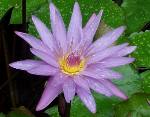 Flowers - Colors include white, all shades of pink, yellow, autumn, blue, purple and undertones of green. All stand above the water and shapes are usually starry but some varieties are more cupped. |
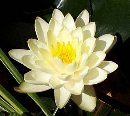 Flowers - Colors include white, all shades of pink, yellow and changeable autumn. Many, though not all, float on the surface of the water and many are cup-shaped with some starry. |
|
|
|
||
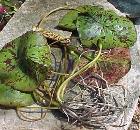
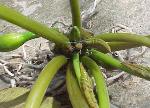 Growth Habit - Tropicals grow from a single central crown. All leaves and flowers radiate from this point and growth is vertical. |
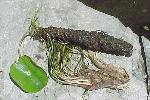 Growth Habit - Hardies grow horizontally from and along a fleshy rhizomatous rootstock. "Eyes" at points along the rhizome produce new crowns. |
|
 Pads - Tropical pads are usually somewhat thin with edges slightly scalloped or toothy. They can be plain green, flecked, mottled or whorled with maroon or bronze. |
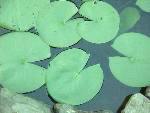 Pads - Hardy pads are rather thick and leathery with smooth edges. Most are plain green though many are lightly mottled with maroon when young. The exception is 'Arc-en-ciel' which is green, pink and maroon. |
|
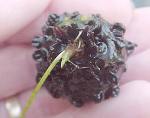 Propagation - From tuber and division for exact duplication, from seed for variation. In some varieties known as "viviparous", from new plants produced on the leaves. |
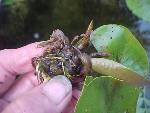 Propagation - From division for exact duplication, from seed for variation. |
|
We also include the characteristics of tropical night blooming lilies since they are a little different from day bloomers and we include N. mexicana, classified as a hardy but quite different from the rest of them! We don't recommend growing it because it is fairly undistinguished and can be invasive but it is a VERY important parent of many of our best hardy cultivars.
|
Tropical Night Bloomers 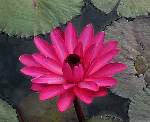 Flowers - Colors are limited to white, all shades of pink and nearly red. All stand above the water. |
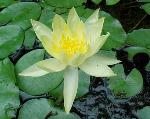 Flowers - Yellow opening only in the afternoon. N. mexicana 'Cape Canaveral' has larger flowers. |
|
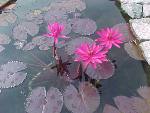
|
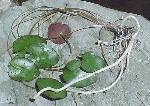
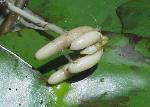 Growth Habit - N. mexicana grows from a central crown but spreads by runners which make new plants along them. Junctions in these runners can have little "bunches of bananas" that can also make new plants. |
|

|
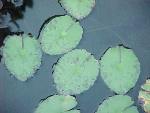 Pads - N. mexicana pads are rather thin with wavy edges. They are lightly splotched with maroon. |
|
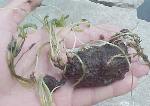 Propagation - From tuber and division for exact duplication, from seed for variation.. Night bloomers often make short runners from large tubers and then make new plants. |
|
